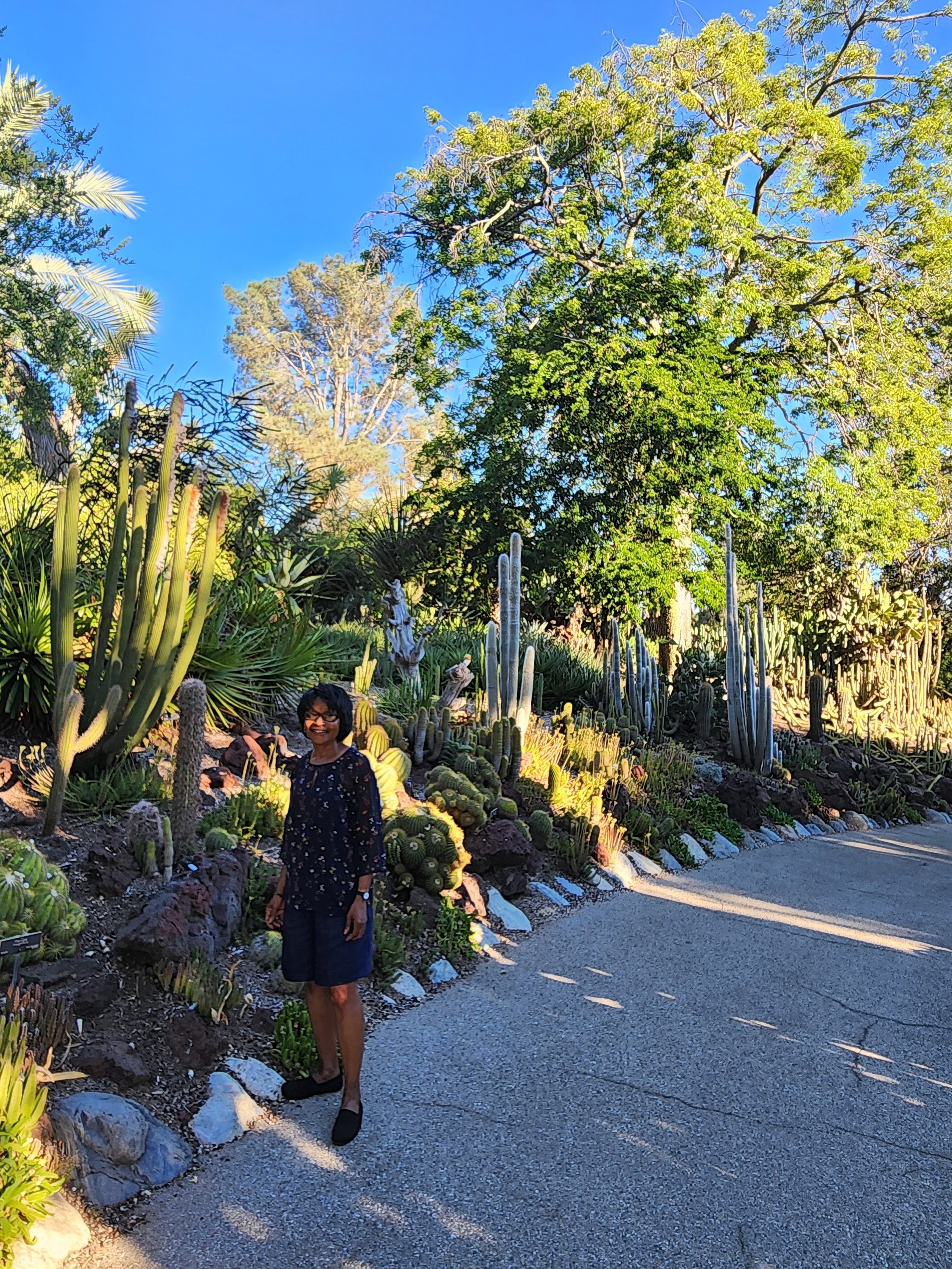A Black Girl's Guide to a Desert Walk
September 5, 2023 — Not in the Mojave Desert or the Sonoran. Not in Joshua Tree National Park or the land of giant saguaros, Saguaro National Park. Her stroll, each step, winds through a man-made desert called Desert Garden, one of a dozen ecosystems created on over 130 acres of land bequeathed to Los Angeles County by railroad magnate and art collector Henry E. Huntington, a man also known as a voracious reader and book collector.
Sometimes she feels like a female version of herbologist Dr. Sebi, out and about among plants. This time at The Huntington Botanical Gardens in San Marino, California. She walks down a paved path spread down the middle of Huntington’s Desert Garden. She finds tall and majestic saguaros—on the left side and right—like the giant ones in Arizona.
Succulents and golden barrels planted at the base of saguaros catch the Black girl’s eyes.
It’s a summer evening between 5:30 p.m. and 7:30 p.m., her favorite time on this walk, when the sun kicks back, settles down and shines mellow orange and yellow hues over this man-made oasis. A starlight’s romance with Earth that time of day.
A Black girl’s mentor once said:
“Basically, you still have the moisture, the fauna, the flora that one expects to exist in a tropical country. And I guess I enjoy that.” page 102
“I selected plants whose molecular structure is complete.” page 48
“I learn about the use of the elderberry in Yugoslavia. This man was playing the piano and he was drinking out of his glass, and he was very happy. So I asked the bartender what was that? And he looked at the bottle—elderberry. He said, ‘That man is not going to get tired because he drinks elderberry.’ And many years later, when I was assisting someone in Los Angeles, a lady in her 85th year, she was very weak. I remembered the elderberry.” page 112
—Dr. Sebi in Sojourn to Honduras Sojourn to Healing: Why An Herbalist’s View Matters More Today Than Ever Before


